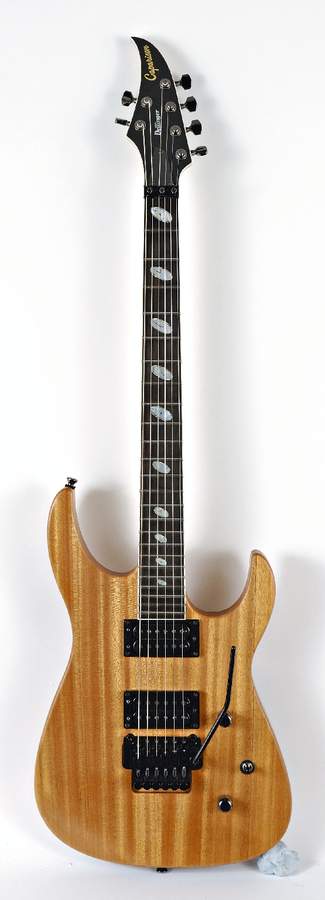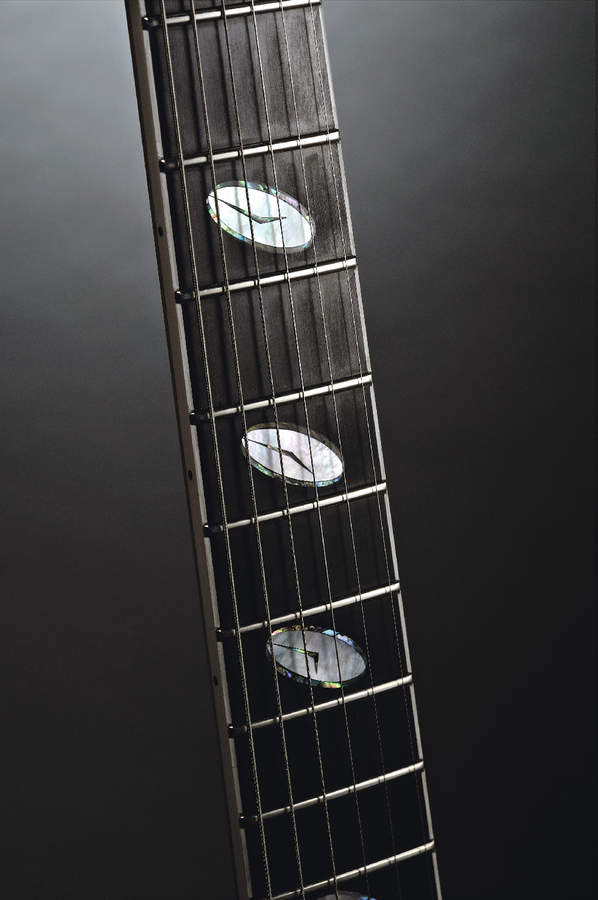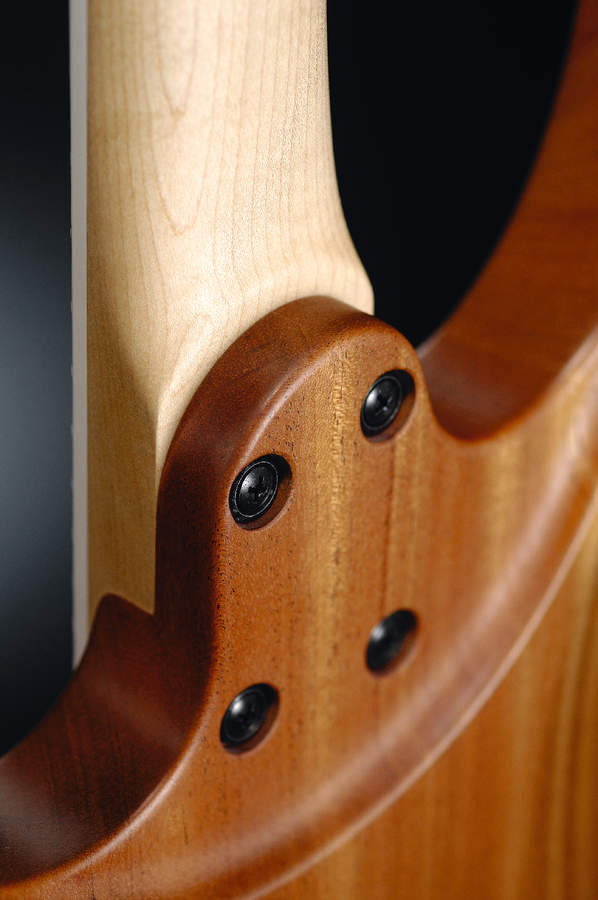MusicRadar Verdict
For no-nonsense, down-and-dirty rock with its own unique twist, this guitar is a must-try alongside Jackson and Ibanez.
Pros
- +
The stripped-down vibe. Wonderful neck. Versatile switching options. The full, woody tone.
Cons
- -
All things considered, not a great deal.
MusicRadar's got your back

Caparison Dellinger II

Caparison Dellinger II

Caparison Dellinger II
Caparison guitars generally bare the hallmarks of designer Itaru Kanno's days at Jackson, but the oiled mahogany body and general vibe of the Dellinger II sets it apart from its flashier siblings.
Build
All Dellingers possess a solid mahogany body and the graining and golden honey colour of this natural example are exquisite. Although there are a number of dark horizontal lines across the guitar's front, we can confirm that the body comprises two solid and distinct bookmarked sections.
Electrics include two Caparison PH humbuckers with the push/push splitting the coils of both at a stroke and a standard three-way toggle undertaking selection duties.
The most important difference between this and other Caparisons though, is the bolt-on two-piece hard rock maple neck. This means that the guitar sits at a more familiar angle, much flatter overall than the wrap-around characteristics of its sibling, the Caparison TAT.
To give efficient access to all 24 frets, the heel is reduced to such an extent that, even if your style involves placing your thumb dead centre of the neck, you'll be able to get all the way up the dusty end.
Granted, the contouring isn't as severe as that of Washburn's patented Stevens Extended Cutaway design, but it's been efficiently and thoughtfully carried out nonetheless - and for a genuine reason too.
Sounds
As you may expect, the mahogany body creates a warm with a definite sparkle that enhances the basic tone rather than being an integral part of it. The push that makes Les Pauls so much fun to play at high gain is available immediately, with the zing ensuring that clarity remains at an optimum.
Want all the hottest music and gear news, reviews, deals, features and more, direct to your inbox? Sign up here.
Lowering the gain and treble of the amp gives a more Fender-like tone that demonstrates equal amounts of middle and expressiveness that, again, would be very useful in blues circles, while the clean arsenal is inspiring.
Flicking to the neck pickup and using the often redundant tone pot, it's possible to mimic - up to a point - the creamy wonder of a Paul's neck humbucker and, with high-gain providing enough bite to overcome the mush, you can get away with rolling all the tone off.
All up, the Dellinger has the focus and power to satisfy metal and fusion fans, albeit warmed up nicely with that simple mahogany body construction.
Guitarist is the longest established UK guitar magazine, offering gear reviews, artist interviews, techniques lessons and loads more, in print, on tablet and on smartphones
Digital: http://bit.ly/GuitaristiOS
If you love guitars, you'll love Guitarist. Find us in print, on Newsstand for iPad, iPhone and other digital readers
